We are a week into JMU’s Exploring the Good Life in Scandinavia and have been centered in wonderful, summery Copenhagen all week.
Day 1
For the first time, we’re working with the Danish Institute for Study Abroad for housing, activities, classroom space, etc. The day started with a huge group meeting for all DIS participants at the building that used to house Copenhagen’s circus (?!) and is now a too-fancy-for-us concert venue.

We toured our classroom and facilities, which are perfectly located right on the main shopping street (the Stroget).
We had a great guest lecture from a DIS professor and learned many things. The most striking may have been to toughen the kids up young. Here they have forest kindergartens (“learn to be cold and uncomfortable, learn to climb trees and use knives”), and fairy tales with non-Disneyfied endings.
Afterwards, we wandered over to Kongens Have (the King’s Garden at Rosenborg Palace), and to Nyhavn for the requisite group photo. Today had a lot of classroom time but was also a good orientation to the city.

Day 2
Our 10 a.m. class started with a hop over to Sct. Peders Bageri for what some say are the best cinnamon buns (a.k.a., cinnamon snails) in the city, available only on Wednesdays.
This provided an easy segue into the day’s topic: savoring. When are we most present and grateful in a given moment? When is this easy and natural and when is it difficult? How can we be better at this, both in everyday life and in our travels? (Naturally, this leads into a discussion of technology, photography, and social media and whether this stuff helps or hurts our savoring ability.)
To bring mindfulness to life, Joe led us through the raisin meditation. For the first time ever, we had an entire room of raisin lovers, with no one grumbling and wondering why we couldn’t be doing this with chocolate instead.


The afternoon took us to Christiania, Copenhagen’s second most popular tourist destination. Reactions to Christiania are pretty extreme. Some see it as dodgy and dirty, others find it idyllic and don’t want to leave. Whatever the reaction, it’s undoubtedly fascinating as an alternate way of living and as a social experiment with an uncertain future.
This was the first time I’d done a guided tour (given by a 40-year Christiania resident) and it was much better than simply wandering around aimlessly. In addition to being informative, she was as quirky and surprising as the place itself.

The students wanted to stick around for dinner so we parted ways. My love of a great view won out over my fear of heights, so I climbed the exposed spiral tower of the Church of Our Savior. The 360 view was breathtaking and I had the place all to myself, but note the death grip…
Day 3
We put our mindful eating and savoring lessons to good work today on the Copenhagen Food Tour, which takes place in and around the wonderful Torvehallerne food hall. This is one of my absolute favorite outings. It hits so many marks: savoring, yes, but also New Nordic cuisine, local food, and sustainability. We also get a touch of history and subtle lessons in the culture. Our guide, Maria, is an expert and a hoot.

We took class outside afterwards, to the nearby botanical gardens.

Did I mention that the weather here is absolutely perfect? We’ve been extremely lucky so far! Part of me feels like we’re missing something key about Scandinavian psychology by skipping out on the cold and grey. A much bigger part of me is thrilled to be spared.
Day 4
Today’s class topic was cycling. Copenhagen is the most advanced, forward-thinking bike-friendly city in the world. Could this contribute to a high degree of happiness? And, if so, why? Is this something we can bring back with us, or does it require a certain infrastructure, climate, and topography that we just don’t have? Is driving in the U.S. just too convenient and cheap to make bikes appealing? This one is hard to place on the “can we bring it back or not?” continuum.
We didn’t have anything scheduled for the afternoon, but it was another perfect weather day. Half of us headed on the train north to the Louisiana Museum of Modern Art, while others rented a boat and cruised around Copenhagen’s harbors.
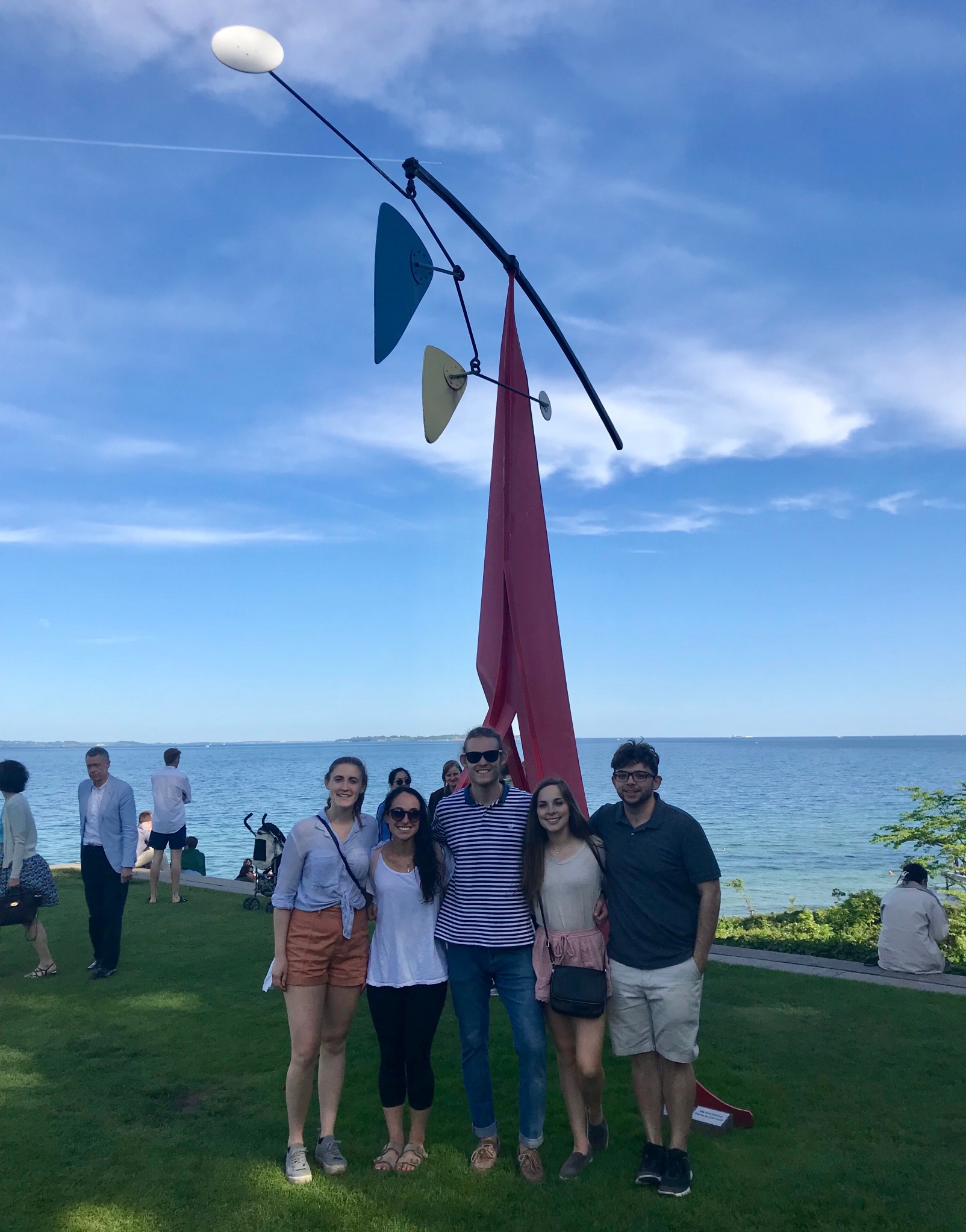
We all met up for a night at Tivoli Gardens (btw, if Christiania is the second-most visited place in CPH, Tivoli is the first). It features gardens, yes, but also rides, food, fireworks, performances, etc. etc. etc.

Day 5
The weather was iffy for the first time, so we postponed our trip to Lund and made it a free day. I explored our local neighborhood, Norrebro, while the students had more far-flung adventures. Some took a long (!!) walk to the Carlsberg Brewery, and a few others biked out to the outskirts of the city to look for the six hidden giants. So much for the strong advice that a car is needed for these expeditions!

That brings me to this fact: I am so thrilled, impressed, and inspired by this group’s level of adventurousness. They set out on daunting journeys like these enthusiastically but with common sense. They’re brave; they’re not afraid to get lost in a foreign city, to drive a motorboat, to follow a Danish train schedule, or to learn to ride a bike in the busiest biking city in the world (which is kinda like learning to drive on the D.C. Beltway at rush hour). AND they also manage to be prompt, prepared for class, and respectful of one another. I couldn’t ask for more.
Day 6

Today was our bike trip to the seaside town of Dragor, 11 miles south of Copenhagen. The weather had been looking dicey but fortunately cleared up enough for us to head out.
We started out in the heart of CPH and, well, a 17-person group of shaky cyclists in a busy city is quite the project. Eventually, we left the crowded urban bike lanes and hit more relaxed Amager, the Baltic Sea, Kastrup, the airport, and – finally – adorable Dragor. We had some ice cream, some walk-around time, and then it was time to head back.

This was probably a bit more than we bargained for – some windy spots, a few intense moments of traffic, a couple bike snafus – but we did it. 22 miles!

Day 7
Our first semi-gross weather day (a.k.a., the typical study abroad weather). I was glad: morning rain made it a perfect movie day. We had a long class that included a new documentary, Finding Hygge. We discussed this idea of…what, exactly? Coziness, relaxation, comfort, easy conversation, lack of stress…
Hygge is a concept that is so woven into the Danish psyche that it’s difficult for them (and us) to define and discuss. And yet it’s held up as a key component of happiness here, so it’s well worth considering. What we concluded is that hygge is not showy, not materialistic, and not stressful. It requires time, intention, and cannot be forced. It has a potential dark side that we have to be on the watch for. And – with practice – it’s perhaps something we can take home with us (unlike, say, socialized medicine, state-funded college, or five weeks of paid vacation per year). And it would make a great name for my future dog, but that’s another story.
Students also shared their favorite moments via photos and I was – again – so happy to hear about their adventures, but also to hear how much they genuinely like one another, are willing to compromise, and have these hilarious moments together.
It was a very good day, although not a particularly photogenic one. But here’s my 4 a.m. sunrise photo and my ice cream.
For the evening, students broke into small groups and had dinners with Danish families around Copenhagen – which I can’t wait to hear about – while Joe and I had an unforgettable meal at Kiin Kiin.
And another week of adventures awaits!
































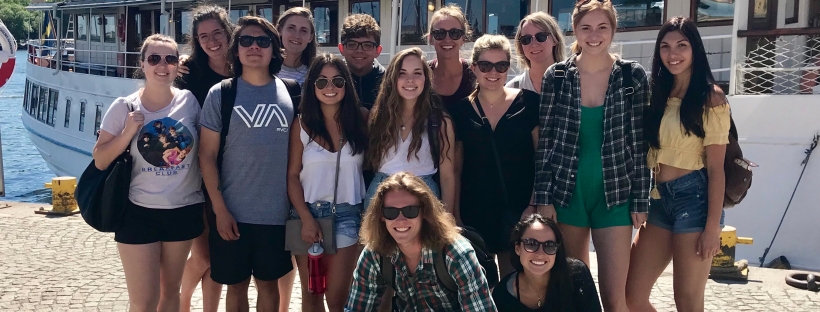





 We were staying in the Norrebro neighborhood, which was ground zero for the first night of
We were staying in the Norrebro neighborhood, which was ground zero for the first night of 

 Weather is usually a primary concern for me on this study abroad, because so many of our activities are outdoors. But it’s barely mentioned here because we continue to be so ridiculously lucky!
Weather is usually a primary concern for me on this study abroad, because so many of our activities are outdoors. But it’s barely mentioned here because we continue to be so ridiculously lucky!
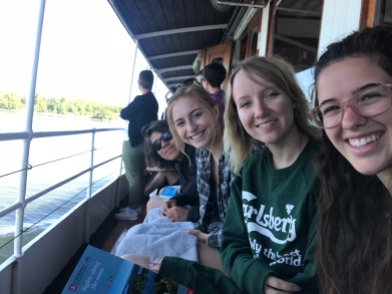


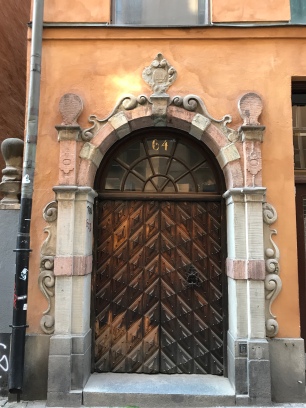





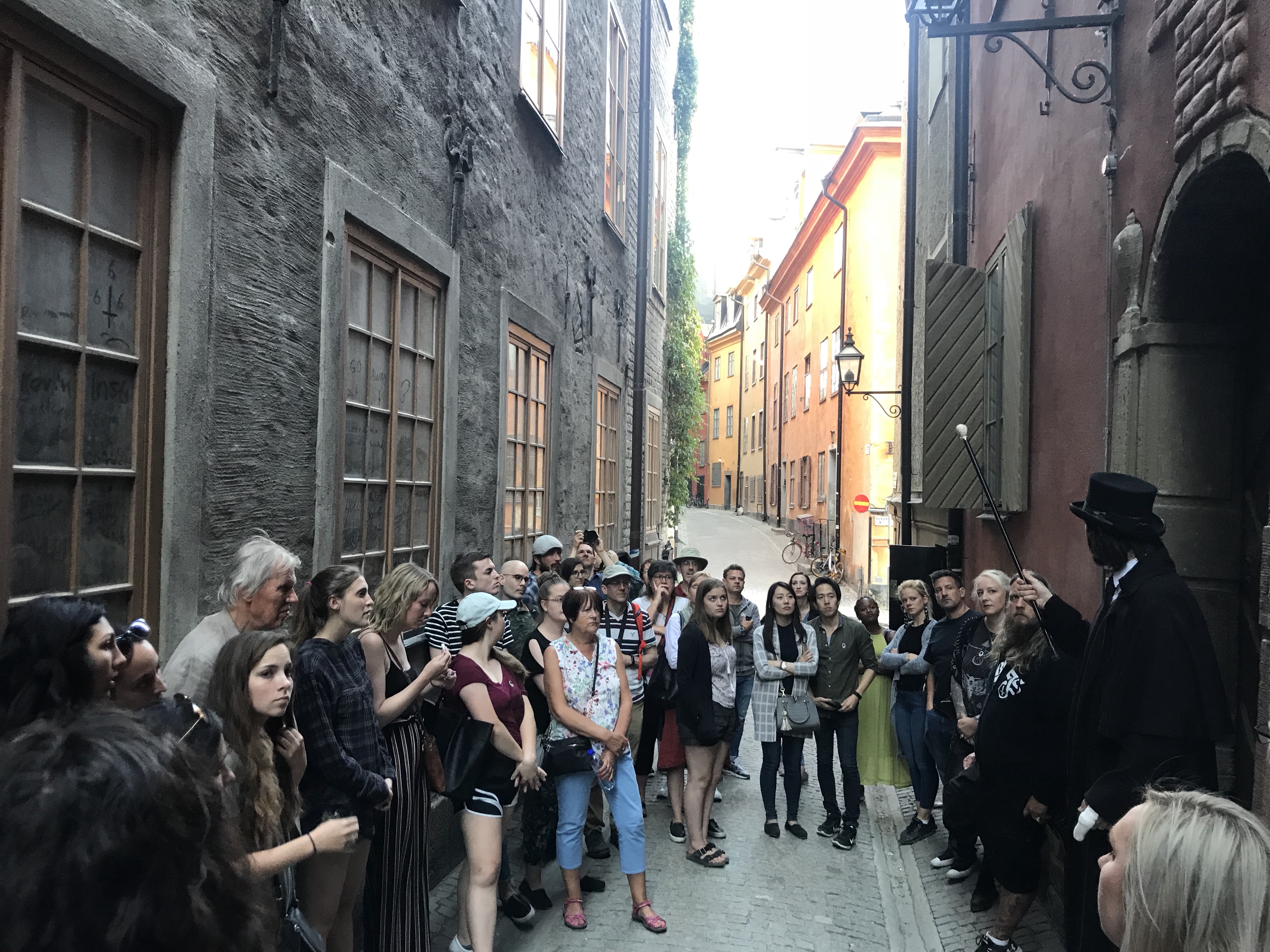
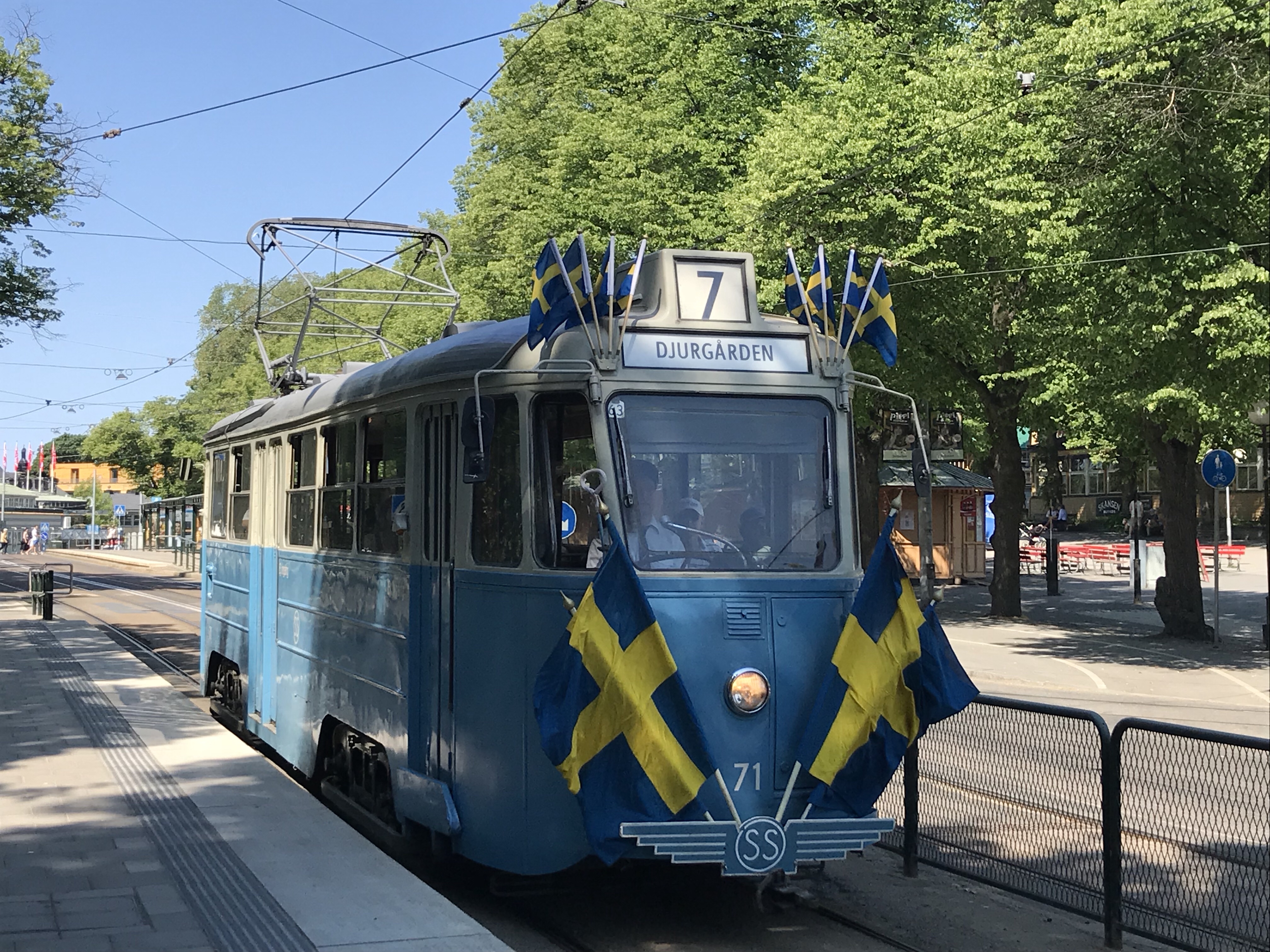
 It’s massive and has all kinds of exhibits about traditional Swedish life (imagine a Swedish Colonial Williamsburg), but the Nordic animals were the biggest hit.
It’s massive and has all kinds of exhibits about traditional Swedish life (imagine a Swedish Colonial Williamsburg), but the Nordic animals were the biggest hit.



 Stockholm’s metro is sometimes called the
Stockholm’s metro is sometimes called the  It’s all too easy for us to leave here feeling like the Scandinavian countries are doing everything right while we are, umm, not. This lecture highlighted the complications of implementing the social welfare system and the moral conflicts woven into immigration policy. In short, it filled in some important gaps.
It’s all too easy for us to leave here feeling like the Scandinavian countries are doing everything right while we are, umm, not. This lecture highlighted the complications of implementing the social welfare system and the moral conflicts woven into immigration policy. In short, it filled in some important gaps.


 Yesterday was my 10th marathon and my first time ever
Yesterday was my 10th marathon and my first time ever  We started outside the 1912 Olympic Stadium in the open sun. I was stuck in a tight pack for awhile, which I hate. Each mile or so, there’d be an aggressive rush to the sprinklers and the water stations as we all attempted to cool down. Shade was a commodity everyone was fighting for. And this course was not the pancake I remember. Two new hills had been added, I swear.
We started outside the 1912 Olympic Stadium in the open sun. I was stuck in a tight pack for awhile, which I hate. Each mile or so, there’d be an aggressive rush to the sprinklers and the water stations as we all attempted to cool down. Shade was a commodity everyone was fighting for. And this course was not the pancake I remember. Two new hills had been added, I swear.
 Then, when I thought they were done (because who wants to spend all afternoon watching a marathon?) they surprised me at the finish line, which ends with a half-lap around the stadium track.
Then, when I thought they were done (because who wants to spend all afternoon watching a marathon?) they surprised me at the finish line, which ends with a half-lap around the stadium track.
 Did I mention that this was the best? Marathons often deliver the full range of intense emotions, but I don’t remember going from angry and alone to joyful and supported in such a short time. It makes the fact that this was not my personal best day seem very incidental.
Did I mention that this was the best? Marathons often deliver the full range of intense emotions, but I don’t remember going from angry and alone to joyful and supported in such a short time. It makes the fact that this was not my personal best day seem very incidental.

























































 I missed my A goal by an almost laughable three seconds, running a 3:30:02. The rational part of me is thrilled by an almost 7 minute PR and a nearly 15 minute BQ on a hot day. The rational part of me is amazed to be setting big PRs at 39, and grateful to have emerged uninjured and eager to keep running. But that emotional part of me is plagued by all those things I could have done to get those three seconds back. If only I’d taken a turn tighter, pushed harder, left my iPod alone, skipped the deep dish pizza on Friday night, walked less the day before, eaten one more gel, eaten one less gel, lost a few ounces. You name it. I didn’t collapse at the finish, so I surely had something left! Ok, stop. Stop!! It’s a win.
I missed my A goal by an almost laughable three seconds, running a 3:30:02. The rational part of me is thrilled by an almost 7 minute PR and a nearly 15 minute BQ on a hot day. The rational part of me is amazed to be setting big PRs at 39, and grateful to have emerged uninjured and eager to keep running. But that emotional part of me is plagued by all those things I could have done to get those three seconds back. If only I’d taken a turn tighter, pushed harder, left my iPod alone, skipped the deep dish pizza on Friday night, walked less the day before, eaten one more gel, eaten one less gel, lost a few ounces. You name it. I didn’t collapse at the finish, so I surely had something left! Ok, stop. Stop!! It’s a win.

